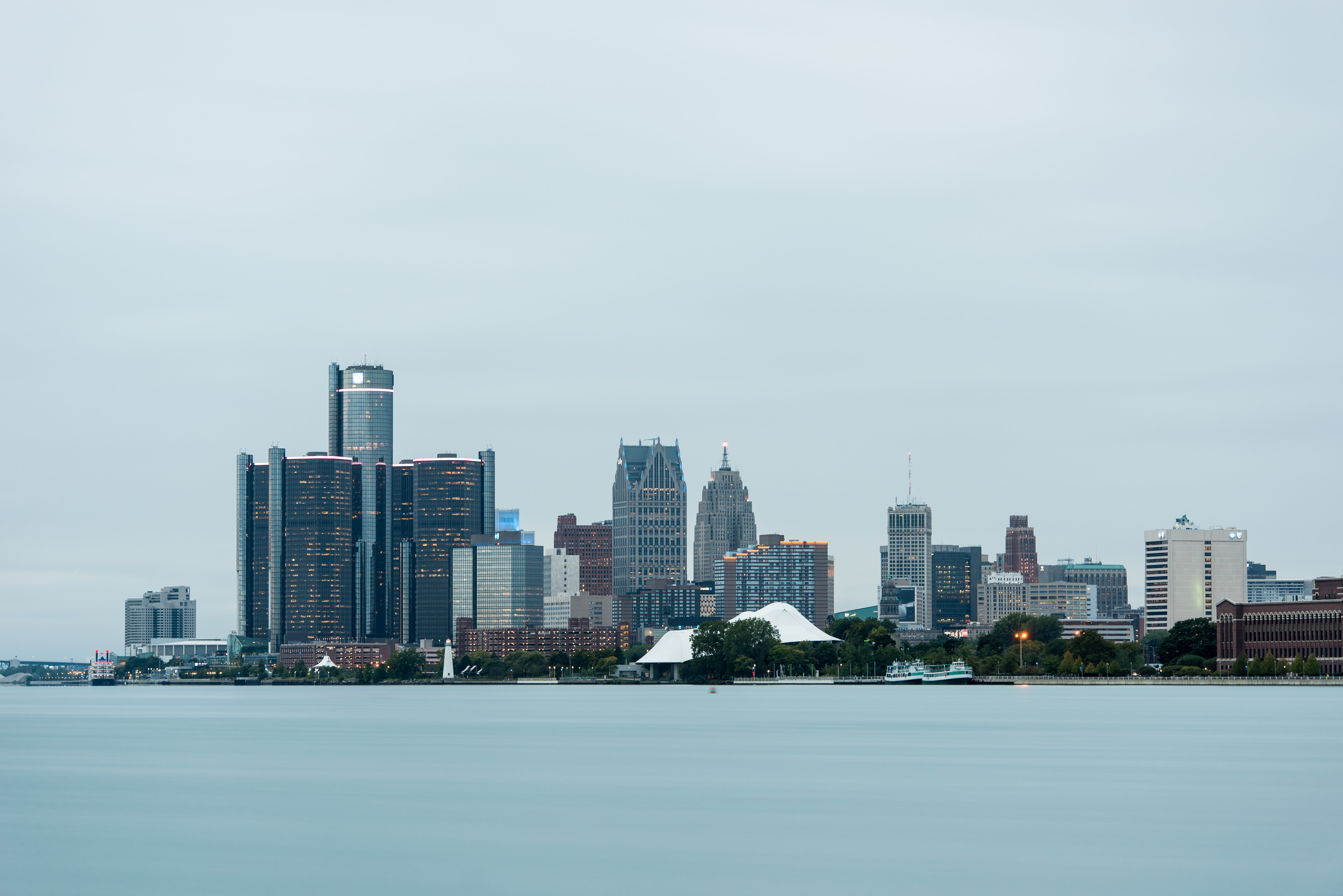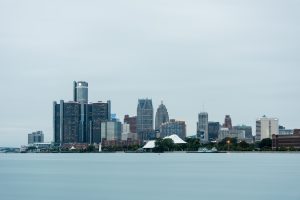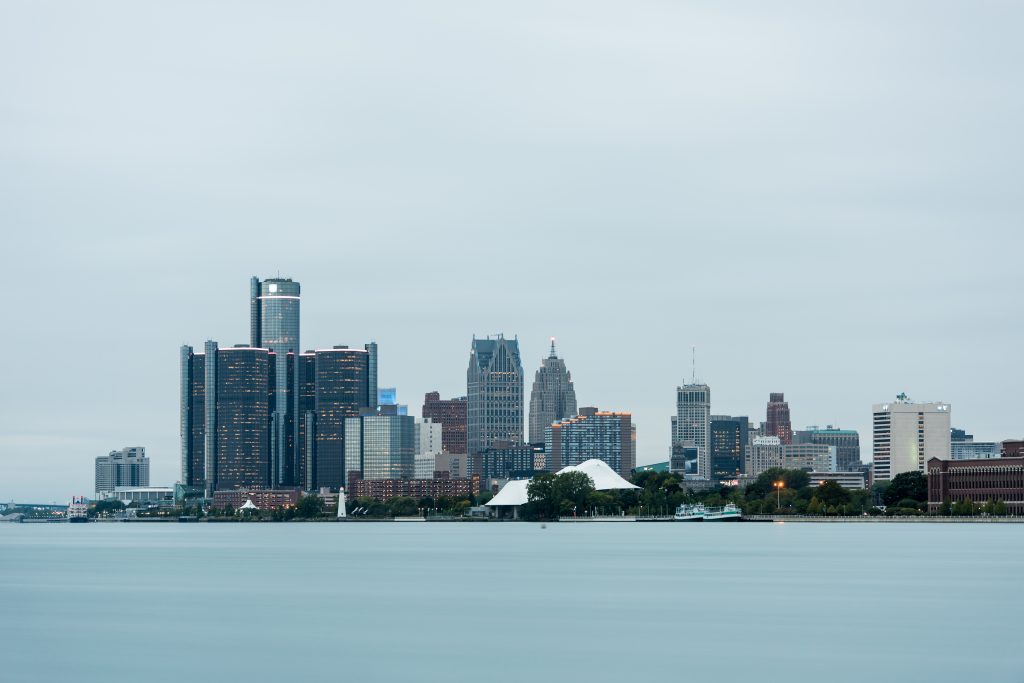Source: Michigan News

9/19/18 GM’s Renaissance Center and the skyline from Belle Isle in Detroit, MI. Photo by Austin Thomason, Michigan Photography.

9/19/18 GM’s Renaissance Center and the skyline from Belle Isle in Detroit, MI. Photo by Austin Thomason, Michigan Photography.
Detroit is showing strong signs of economic recovery from the pandemic, with an impressive drop in the jobless rate and job growth in certain sectors. Still, the problem of too many residents not earning enough money persists, according to a University of Michigan study.
The Detroit Economic Outlook for 2020-26 reveals economic momentum in the city, which was hit early and hard by the pandemic, while recognizing that tough financial realities persist for some residents. The forecast calls for a stronger recovery in Detroit than the rest of Michigan, driven by several large projects.
“Detroit’s unemployment rate has declined more quickly than we had dared to hope last year,” said economists at U-M’s Research Seminar in Quantitative Economics, who conducted the research as part of the City of Detroit-University Economic Analysis Partnership.
The report notes an average jobless rate of 10% so far this year, down from a 22% average in 2020 and 38% in the first couple months of the pandemic. The rate is expected to drop gradually to 6.9% by 2026.
“We are concerned that these statistics may be underestimating labor market slack throughout Michigan,” the researchers cautioned, “but they are nonetheless encouraging news.”
As for job growth, researchers are most optimistic about the city’s blue-collar industries: They forecast those industries to end the forecast period roughly 25% higher than before the pandemic. Researchers expect more moderate growth in the higher-educational attainment services sectors, which they forecast to recover to about 2.5% above pre-pandemic levels.
High-profile projects boosting—or expected to boost—recovery in those sectors include Ford Motor Co.’s renovation and redevelopment of Michigan Central Station, Stellantis (formerly Fiat Chrysler) building the first new auto assembly plant in Detroit in almost three decades, and construction of the Gordie Howe International Bridge.
The economists say they are least optimistic about the outlook for the city’s lower‐education services industries, which include the hard‐hit leisure and hospitality sector. Those sectors are expected to remain 3% below their pre‐pandemic employment levels by 2026.
The study finds the average wage rate at jobs located in Detroit last year was around 23% higher than in the state overall. However, high wages at those employers don’t translate into high average wages for city residents. Wage and salary income for an employed resident averaged $36,100 in 2020.
The forecast calls for moderate wage growth: Wage and salary income at jobs in the city is expected to reach $83,000 by 2026 and average wages among Detroiters to reach $40,700.
The analysis finds less than 30% of Detroit residents working full-time earned enough to sustain a family of three at a middle-class standard of living in 2019. Only 23% of the city’s residents in that category have a bachelor’s degree and only 16% of full-time city workers with a high school diploma or less can sustain a family of three at a middle-class standard, researchers said.
“Graduating from high school is no longer a ticket to a middle-class standard of living, either in the city of Detroit or anywhere else,” the researchers wrote. “Earning a college degree, on the other hand, appears to be a reliable predictor of the ability to earn a middle-class living.”
The report was written by Jacob Burton, Tina Dhariwal, Gabriel Ehrlich, Donald Grimes, Owen Kay, Daniil Manaenkov and Michael McWilliams at U-M’s Research Seminar in Quantitative Economics, who collaborate on the City of Detroit-University Economic Analysis Partnership with the city of Detroit and economists at Michigan State and Wayne State universities.


